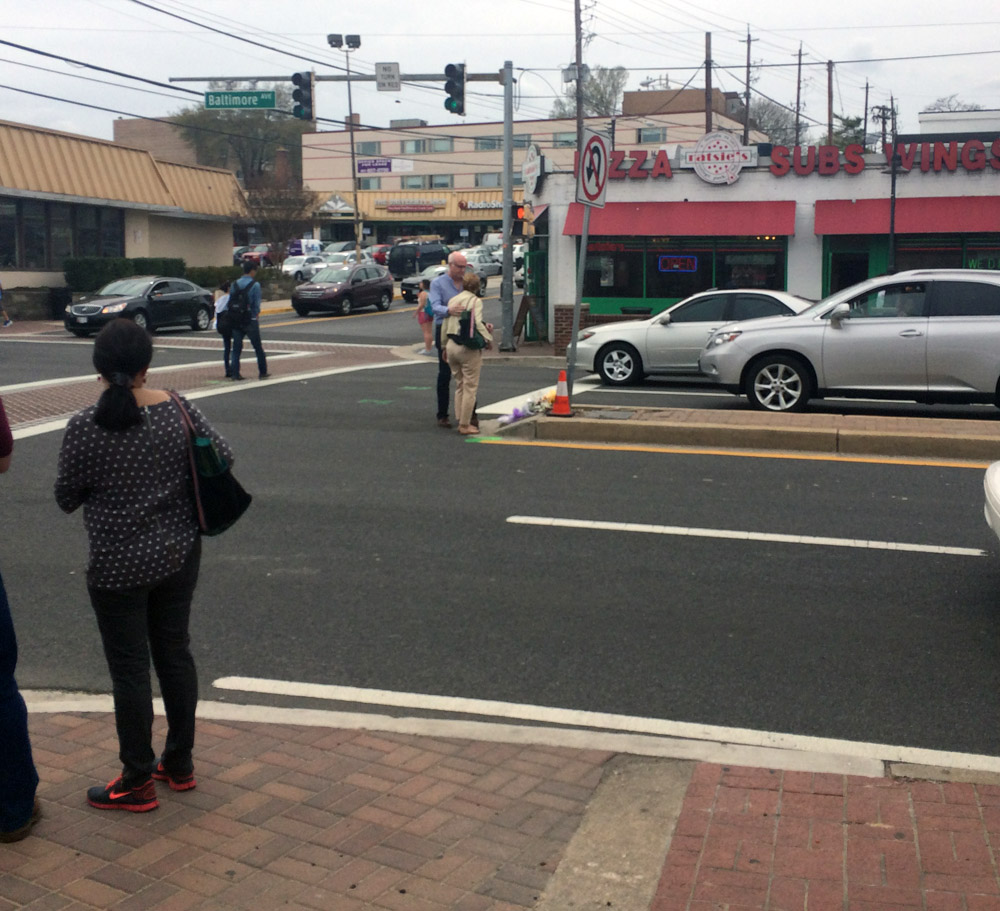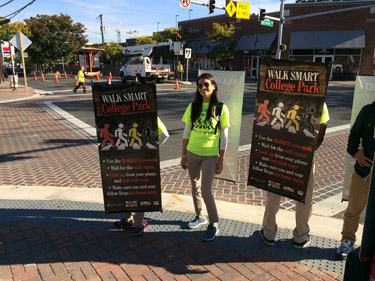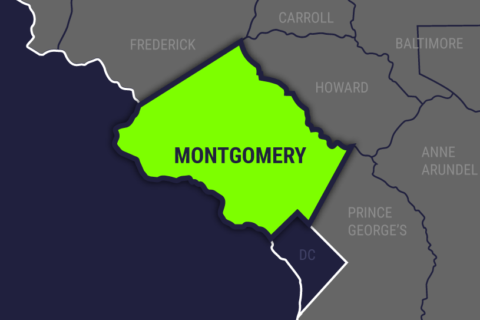COLLEGE PARK, Md. — The faces staring back at from the rear of buses: People with tire tracks across their faces with phrases underneath like “You can’t fix pedestrians at a body shop.”
Those ads are just one aspect of the regional Metropolitan Washington Council of Governments’ Street Smart public safety campaign.
As part of the campaign, police throughout the region will increase enforcement efforts from March 23 to April 19. Every road user is targeted in the campaign. Police will dole out safety advice and warnings about the possibility of fines up to $500 for violating traffic laws.
This year’s campaign was launched at College Park’s City Hall. The location was deliberate: Multiple pedestrian fatalities in College Park last year led to the speed limit reductions and other safety improvements.
According to John Saunders, director of highway safety at the Virginia Department of Motor Vehicles, there were 700 traffic fatalities in 2014. Of those, 102 involved pedestrians and cyclists.
“A closer look at the numbers shows that 90 of the 102 fatalities were pedestrians, and that 58 percent were the drivers’ fault,” Saunders says.
In Montgomery County, according to Jeff Dunckel, the county’s pedestrian safety coordinator, says when there are collisions involving cars and pedestrians or cyclists, drivers are at fault 60 percent of the time.
But the warnings to pedestrians and cyclists are seen by advocates for those groups as victim-blaming. Dunckel says that’s not the intent at all.
The intent is to humanize the pedestrian or cyclist to get drivers to see them not as obstacles in their way but human beings.
“What we’re trying to alert people to is that when in fact pedestrians are hit, they are the victims, they are the ones that suffer. You don’t see many drivers end up in the hospital because they hit a pedestrian,” Dunckel says.
Riverdale Police Chief Dave Morris says it’s important for pedestrians and cyclists to follow the rules to stay safe. But he says the idea is not to blame them. He says drivers keeping to posted speed limits play a big role in reducing fatal crashes.
“These collisions are preventable” Morris says.
Tips if you’re driving:
- Slow down and obey the speed limit.
- Look twice for people in crosswalks and yield to pedestrians and bicyclists.
- Be careful when passing stopped vehicles.
- Yield to pedestrians and bicyclists when you’re turning at intersections.
- Allow three feet when passing bicyclists.
- Look for bicyclists and cars before you open your door.
- Avoid using your cell phone and never text while driving.
Tips if you’re walking:
- Cross the street at the corner and use marked crosswalks when they’re available.
- Wait for the “Walk” signal before crossing the street.
- Watch for turning vehicles. Before crossing look left, right, and left again.
- Be seen! If you’re walking after dark or in bad weather, make it easier for drivers to see you by wearing light-colored clothing or something reflective.
- Don’t text while you’re crossing the street.
- If you’re on an off-street trail, obey all posted signs and approach intersections with caution.
Tips if you’re biking:
- Obey all traffic signs and traffic signals.
- Ride in the direction of traffic, at least a car-door width away from parked cars.
- Use hand signals so drivers, bicyclists, and pedestrians know what you’re going to do.
- Always wear a helmet.
- Use lights if you’re riding in the dark.
- If you’re on an off-street trail, obey all posted signs and approach intersections with caution.
- Slow down and watch for pedestrians on sidewalks, trails, and in crosswalks.
WTOP’s Kate Ryan contributed to this report.








